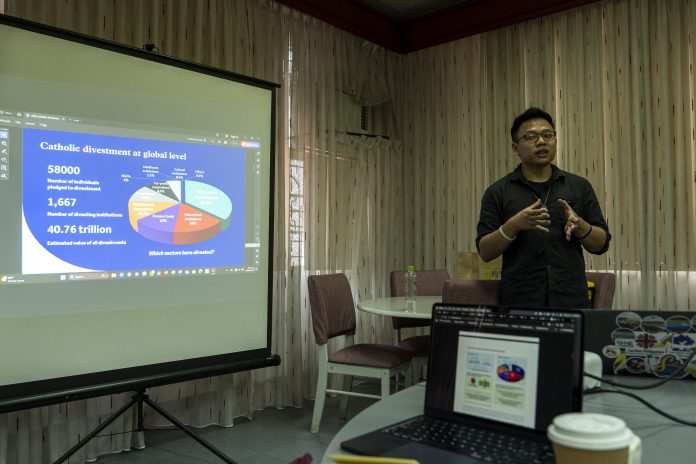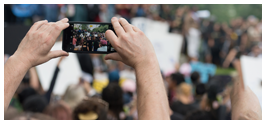The year 2025 marks the 10th anniversary of the publication of Laudato Si’, Pope Francis’s letter calling for urgent action against the climate crisis. It has inspired the global Catholic community to respond with transformative policies, including in the Philippines, the world’s third-largest Catholic nation.
The most decisive of these responses was made by the Catholic Bishops’ Conference of the Philippines (CBCP) through its commitments to divest from extractive and destructive industries, especially fossil fuels and mining.
In a 2019 pastoral letter, the body listed divestment as one of its recommended ecological actions for all of its constituents to implement. This was followed by a pledge to withdraw its finances from banks with no clear policies for fossil fuel divestment by the end of 2025, as indicated in another pastoral letter three years ago.
Yet a closer look shows that the Philippine Catholic community has not made significant progress on fossil fuel divestment in nearly a decade since the launch of Laudato Si’.
Lack of Movement
More than 170 Catholic groups in the Philippines are listed as having shares in 16 corporations known to engage in fossil fuel and mining operations or financing, according to a report by national faith-based non-government organizations. This includes nine archdioceses, 20 dioceses, and numerous congregations, missionaries, universities, and seminaries.
Among the corporations covered is San Miguel Corporation (SMC), which is among the country’s top financiers of coal and natural gas projects and is involved in infrastructure projects that threaten nearby natural environments, such as the construction of an airport north of Metro Manila and a proposed expressway along the polluted Pasig River.
Within SMC alone, there are 167 Catholic stockholders between 2015 and 2024. Among these, only ten have either partially or fully divested from the conglomerate, while four entities saw their shares increase. This resulted in a 16% decrease in the total number of stocks; however, a 25% increase in stock value was observed during the same period.
SMC’s stock price has been on a general decline for the past five years, partly due to its involvement in projects perceived as ecologically destructive. Nonetheless, it reported a 19% increase in net income for most of 2024 due to strong revenue growth across its businesses, which explains the increase in Church groups’ total stock value.
Nonetheless, the ability of the Philippine Catholic community to live up to its divestment pledge rests largely on the willingness of the Archdiocese of Manila (RCAM) to move towards more sustainable financing aligned with the Church’s social teachings.
Despite a statement by Archbishop Cardinal Jose Advincula during the 2023 Season of Creation on its divestment from coal and other destructive businesses, RCAM’s stocks in six corporations directly involved in or enabling these operations have not decreased in the past decade. In fact, its stocks gained PHP11 billion in value during this period. It is also the fifth-highest shareholder in the Bank of the Philippine Islands, with more than USD752 million (PHP43.6 billion) in holdings.
Such a lack of movement is a clear sign of the absence of significant progress in Catholic divestment. It also influences how the rest of the CBCP and other Catholic organizations would respond to the challenge of withdrawing from fossil fuels and mining.
But with halfway to go in 2025, it must be asked: what would count as significant progress in the pledge for Catholic divestment?
Not Just Another Transition
Divestment must be regarded as a form of just transition, a balancing act between urgency and diligence. It would take years after the initial announcement to fully withdraw all finances from corporations with ecologically destructive operations and financing. Dioceses, congregations, and the like must also ensure enough financial security to carry out their respective programs and activities.
There are many angles to examine in this process, as it is more complex than just withdrawal. Divestment is only one half of the entire picture; it is incomplete until organizations find more sustainable ventures worth investing in.
Some would say that even if groups do leave, the lost money would be quickly replaced by other investors. On one hand, this makes the Catholic shareholders still in these corporations a critical part of the process. They have the collective power to influence corporate leaders to shift their policies to be genuinely aligned with sustainability.
What this means is that Catholic groups must be enabled to figure out where best to go after they have divested. While still being shareholders, they must also be empowered to make interventions in annual shareholders’ meetings, online dialogues with corporate leaders, and through writing letters to banks and corporations championing calls for divest-invest—with support from advocacy partners.
On the other hand, the likelihood of other investors taking the place of divesting groups does not diminish the moral imperative of the Church to “walk the talk” in addressing the ecological crisis. After all, Catholic divestment is no longer just a dream in the Philippines.
There are several cases of religious organizations having divested yet still achieving higher yields through sustainable investments. Areas such as San Carlos, Negros Occidental, and Legazpi, Albay, have examples of divesting groups being able to conduct local social development programs while remaining aligned with the Catholic mandate.
In a Jubilee Year that is also critical for climate action, the Philippines’ Catholic leadership must decide how it aims to embody its own teachings through its financial decisions. It needs to overcome barriers such as lack of awareness among bishops about the placement of their diocesan assets, lack of financial literacy on sustainable financing, and a national policy environment that favors more mining operations and the expansion of the natural gas industry.
For the Philippine Catholic Church to “walk the talk,” it must determine how to ensure its finances are used not to worsen the cries of the earth and the poor, but to protect them. Given its progress in the past decade and the growing urgency of climate action, this is easier said than done.
This is the final part of a four-part series featuring the best practices on Catholic-led fossil fuel
divestment in the Philippines.
John Leo is the National Coordinator of Aksyon Klima Pilipinas and the
Deputy Executive Director for Programs and Campaigns of Living Laudato Si’ Philippines. He has
been a climate and environmental journalist since 2016.









